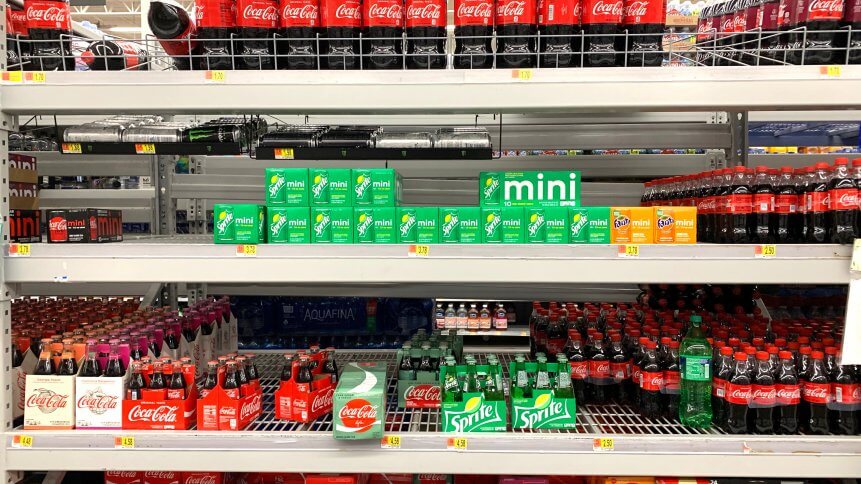Could smart labels change the game for stock management?

The Internet of Things (IoT) holds a lot of promise — particularly for organizations’ operational efficiency. According to McKinsey, businesses stand to save up to US$11 trillion annually by 2025 with IoT applications.
Much of its potential stems from smart labels. Whether it’s shampoo, shoelaces or auto parts, flexible tracking technology can be applied to these items using labels that can be scanned by a smartphone— bringing manufacturers, distributors and the end user closer together with a simple smartphone scan.
Having insight into each and every product’s full background using certified QR codes even offers the possibility of knocking out the counterfeit market.
With a full history at their fingertips, consumers can be sure they’re getting a genuine and safe product, and brands don’t have to suffer a damaged reputation when customers stumble upon counterfeit products. Smart labels effectively enable any consumer packaged product to become internet-enabled, turning every product into an IoT device.
IoT is leading the way for the creation of flexible tracking technology, but business leaders must understand how it works and how to secure it before taking advantage of it.
How do smart labels work?
Each day, millions of trucks carry parts and products to their destinations. Most have GPS tracking enabled, but that provides limited location-based insights and doesn’t have the ability to transmit other important data about the pallets, the cases, nor an individual product’s condition. The limitation of GPS tracking leaves ample vulnerabilities for misplaced and stolen products — and for counterfeit products to enter the supply chain.
Beyond certified QR codes, embedding environmental sensors into products’ labels is the solution to verifying the legitimacy of each individual product and how it was handled before it was delivered. Anyone throughout the supply chain— from manufacturers, to distributors, to retailers, to consumers — can scan the smart label with a smartphone via NFC (near field communication) or Bluetooth and gain insight into where it’s been and if it’s a legitimate product.
These sensors also collect data regarding motion, temperature, humidity and other environmental factors affecting the product’s condition.
Rapidly dropping in cost, embedded sensors have the capability to activate unprompted and inform different parties throughout the supply chain of a product’s condition or its location. In addition to providing consumers and distributors with information after a simple scan, it can also proactively send out alerts about its whereabouts or any issues that come up — offering much more accountability to the process of getting a product where it needs to go.
Sooner than you expect, IoT tracking technology will lend itself to marketing opportunities, not just supply chain tracking opportunities. Consumers can have meaningful and personalized brand interactions in their own homes with their favorite laundry detergent via IoT technology, which can provide special offers and coupons to customers on demand.
YOU MIGHT LIKE

Can blockchain make pharmaceuticals safer?
What about security?
For all the cross-industry potential that IoT brings to the table, it also introduces significant concerns about security and privacy.
Hackers act with increasing aggression and sophistication, and as more connected devices enter the market, criminals encounter more opportunities to successfully attack. Data shows that bad actors are making ample use of the increased changes IoT presents. From 2017 to 2018, IoT attacks rose 600%, according to Symantec.
IoT in inventory management centers around the use of data. When large amounts of data are involved, a strong privacy framework is needed to ensure all information collected is secure and handled in an appropriate way. When a new technology arises, many will be anxious to push an offering out on the market without taking time to consider the security implications.
Looking forward to smart labels’ impact
Smart labels bring significant opportunity for businesses across industries. From allowing for more efficient logistics operations to sidestepping the counterfeit market to creating new chances for personalized brand interactions, IoT enabled packaging stands to change much of the buying experience for customers and brands alike.
By eliminating blind spots in the process and instead providing a full view on the brand side, businesses will be able to make more informed decisions about how to move their product and how to protect their brand from counterfeiters.
Thanks to IoT and smart labels, the full buying and supply chain experience becomes smarter, to the benefit of consumers and business everywhere.
This article was contributed by Scott Fletcher, CEO at LocatorX and Billy Meadow, Founder and CTO at LocatorX.









